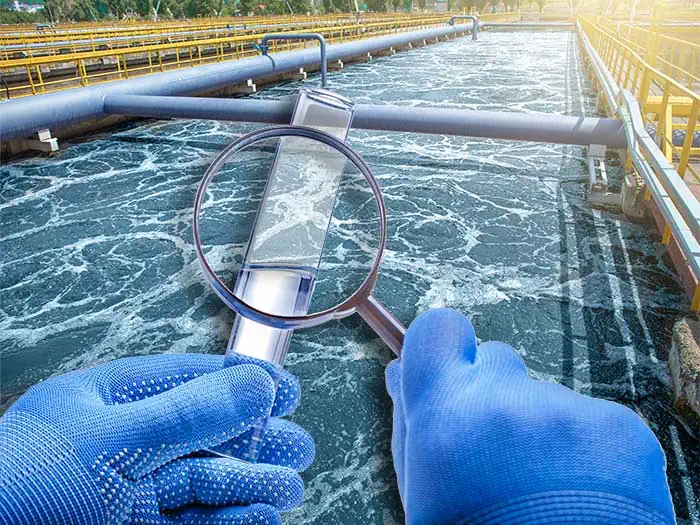PFAS Treatment in Drinking Water
Wiki Article
Innovative PFAS Treatment Solutions for Safer Water
The raising prevalence of PFAS contamination in water supplies requires a vital assessment of cutting-edge treatment options. In addition, emerging bioremediation strategies supply an even more lasting method to dealing with PFAS difficulties. pfas management.Overview of PFAS Contamination
PFAS contamination has actually become a substantial environmental and public health concern. Per- and polyfluoroalkyl materials (PFAS) are a group of synthetic chemicals recognized for their perseverance in the atmosphere and body, leading them to be commonly referred to as "permanently chemicals." These compounds have been extensively made use of in different markets, consisting of firefighting foams, water-repellent fabrics, and food packaging, mostly due to their water- and grease-resistant residential or commercial properties.The prevalent use of PFAS has actually caused their detection in dirt, water products, and even in the blood of humans and animals. Researches have actually connected PFAS exposure to numerous health and wellness concerns, including developing results in infants, immune system disorder, and numerous types of cancer. In addition, the environmental determination of these substances complicates their destruction and removal, elevating concerns about long-lasting environmental influences.
Regulative bodies are increasingly applying rigid standards to monitor and reduce PFAS levels in alcohol consumption water and other ecological tools. As awareness of PFAS contamination grows, it has come to be necessary for communities and sectors to seek reliable treatment remedies to alleviate direct exposure and guard public health.
Advanced Purification Technologies
As the necessity to attend to PFAS contamination escalates, advanced purification technologies have become an essential component in the remediation efforts aimed at getting rid of these relentless chemicals from water resources. These innovations leverage sophisticated devices to successfully target and catch PFAS compounds, which are notoriously immune to standard treatment techniques.Among one of the most encouraging approaches is using granular turned on carbon (GAC), which adsorbs PFAS molecules as a result of its high surface location and permeable structure. This method has actually been commonly carried out in both metropolitan and industrial setups, demonstrating significant reductions in PFAS concentrations. Furthermore, ion exchange materials have gotten traction, particularly made to uniquely bind PFAS ions from water, thus promoting their removal.
Membrane layer filtering modern technologies, such as reverse osmosis and nanofiltration, additionally show efficiency in PFAS removal by physically separating pollutants from water - pfas management. These systems can accomplish high degrees of pureness, making them appropriate for alcohol consumption water applications
Chemical Treatment Innovations
Numerous chemical treatment advancements are being checked out to properly resolve PFAS contamination in water supplies. One appealing technique involves using innovative oxidation processes (AOPs), which utilize effective oxidants such as ozone, hydrogen peroxide, or chlorine dioxide integrated with UV light to break down PFAS substances right into less dangerous materials. This method has actually demonstrated efficiency in laboratory setups, revealing possible for scalability in real-world applications.Another ingenious method is the advancement of ion-exchange materials specifically developed to target PFAS. These materials can precisely adsorb PFAS compounds from water, permitting their elimination during therapy processes. Current innovations have actually boosted the efficiency and capacity of these resins, making them a beneficial option for water therapy facilities.
Additionally, scientists are investigating the use of chemical representatives like persulfate and ferrous ions to improve the deterioration of PFAS in polluted water. These representatives can cause chain reaction that help with the breakdown of persistent PFAS compounds.
Emerging Bioremediation Methods
Current innovations in chemical therapy innovations have actually led the way for checking out bioremediation techniques as a viable choice for resolving PFAS contamination. Bioremediation harnesses the natural metabolic procedures of bacteria to weaken or change contaminants, making it an appealing technique for taking on consistent pollutants like PFAS.
Arising strategies in bioremediation include the usage of genetically engineered bacteria that can particularly target and break down PFAS substances. These microbial pressures are being developed for their enhanced degradation capabilities, raising the performance of the remediation process. Additionally, scientists are examining the capacity of plant-assisted bioremediation, where particular plant varieties might uptake and sequester PFAS from contaminated soil and water.
Another encouraging method is the application of bioaugmentation, which includes introducing helpful bacteria into polluted atmospheres to increase the destruction of PFAS. This method can promote faster removal timelines and boost total effectiveness.

Regulative Structures and Requirements
An extensive governing structure is essential for successfully taking care of PFAS contamination and guaranteeing public wellness protection. The boosting recognition of per- and polyfluoroalkyl compounds (PFAS) as toxic wastes has actually prompted numerous government and state firms to develop criteria that control their existence in water materials. The United State Epa (EPA) has established wellness advisories and is pursuing setting enforceable restrictions for PFAS in alcohol consumption water.State-level policies differ dramatically, with some states embracing more stringent guidelines than those suggested by the EPA. These laws often include maximum pollutant levels (MCLs) for specific PFAS substances, surveillance needs, and reporting responsibilities for water utilities. In addition, arising frameworks concentrate on the removal of infected sites, stressing the requirement for effective treatment technologies.

Verdict
Finally, the advancement and application of innovative PFAS treatment services are crucial for dealing with the pervasive issue of water contamination. Advanced purification innovations, chemical treatments, and arising bioremediation methods jointly provide a complex approach to efficiently decrease and weaken PFAS degrees. As governing frameworks remain to evolve, incorporating these innovations will certainly be vital to protect public wellness and bring back the integrity of contaminated water resources, inevitably adding to a cleaner and more secure environment.Report this wiki page